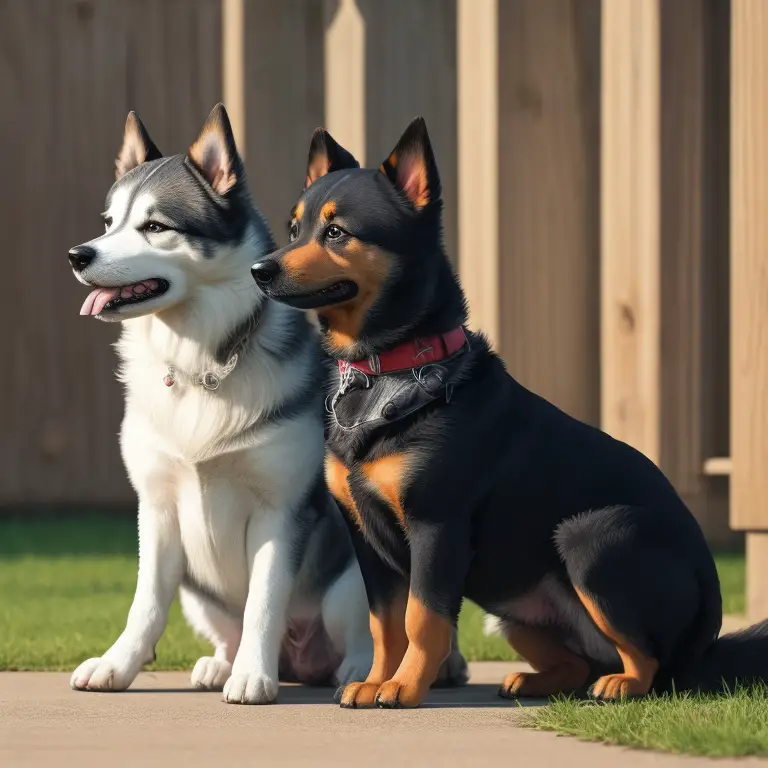
Introduction
- Dogs are not just our companions; they are also capable of learning and adapting to their environment. The process of how dogs learn is a fascinating journey that encompasses various methods and theories.
How Dogs Learn
- Dogs learn through a combination of association and emotion, as well as consequence and action. These processes are fundamental to their ability to adapt and thrive in human environments. Here is a comprehensive guide on the different ways dogs learn and how owners can utilize this knowledge to train their pets effectively.
Classical Conditioning
- Classical conditioning is a learning process that involves associating a neutral stimulus with a significant stimulus, resulting in a conditioned response. This theory was first introduced by Ivan Pavlov, a Russian physiologist, in the late 19th century.
- Examples of classical conditioning in dogs include:
- Associating the sound of a can opener with feeding time.
- Linking the sight of a leash with going for a walk.
- Connecting the sound of a doorbell with the arrival of guests.
- Examples of classical conditioning in dogs include:
Operant Conditioning
- Operant conditioning is a learning process that involves the use of rewards or punishments to encourage or discourage specific behaviors. This theory was developed by B.F. Skinner, an American psychologist, in the early 20th century.
- Examples of operant conditioning in dogs include:
- Using treats as rewards for good behavior.
- Employing a stern voice or time-out as punishment for undesirable actions.
- Utilizing clicker training to shape behavior.
- Examples of operant conditioning in dogs include:
Social Learning
- Social learning is a process where dogs learn by observing and imitating the behavior of other dogs or humans. This type of learning is crucial for puppies as they develop social skills and understand their environment.
- Examples of social learning in dogs include:
- Puppies learning to play and interact with other dogs by watching their littermates.
- Dogs learning commands and tricks by observing other trained dogs.
- Dogs adapting to human environments by observing and mimicking human behavior.
- Examples of social learning in dogs include:
Cognitive Learning
- Cognitive learning involves the use of problem-solving and reasoning to acquire new skills and knowledge. This type of learning is essential for dogs to navigate complex environments and situations.
- Examples of cognitive learning in dogs include:
- Solving puzzles to access treats.
- Navigating obstacle courses to reach a goal.
- Learning commands and tricks through trial and error.
- Examples of cognitive learning in dogs include:
By utilizing the principles of classical conditioning, operant conditioning, social learning, and cognitive learning, you can create a positive and enriching environment for your dog to thrive. Here is an excellent resource for further reading on this topic.

FAQs
- How do dogs learn best?
- Dogs learn best through positive reinforcement, such as treats, praise, and play.
- Can dogs learn from watching other dogs?
- Yes, dogs can learn from observing the behavior of other dogs, a process known as social learning.
- How long does it take for a dog to learn a new command?
- The time it takes for a dog to learn a new command varies depending on the dog’s age, breed, and previous training experience. On average, it can take anywhere from 5 to 30 repetitions for a dog to learn a new command.
- Do dogs have a memory?
- Yes, dogs have both short-term and long-term memory, allowing them to remember commands, experiences, and people.
- Can old dogs learn new tricks?
- Yes, older dogs can learn new tricks, although it may take longer compared to younger dogs.
Conclusion
- In conclusion, how dogs learn is a complex and fascinating process that involves various methods and theories. The key to successful dog training is understanding these processes and utilizing them to create a positive and enriching environment for your furry friend. By incorporating classical conditioning, operant conditioning, social learning, and cognitive learning, you can build a strong bond with your dog and ensure they thrive in their environment. For further reading on this topic, check out this comprehensive guide. Remember, patience, consistency, and positive reinforcement are crucial when training your dog. Happy training!
